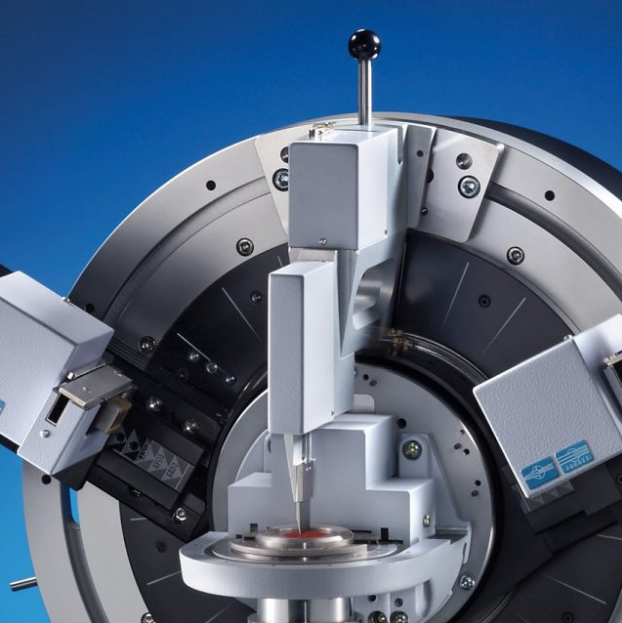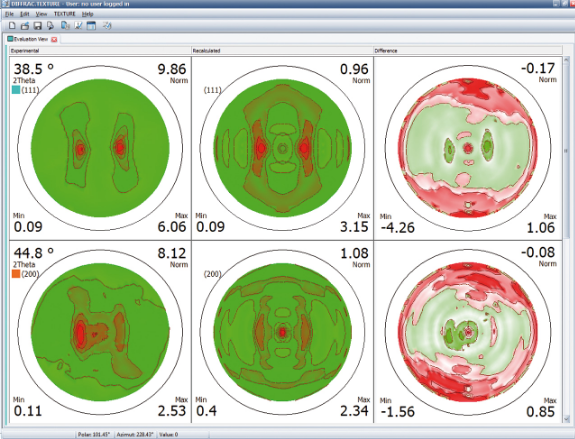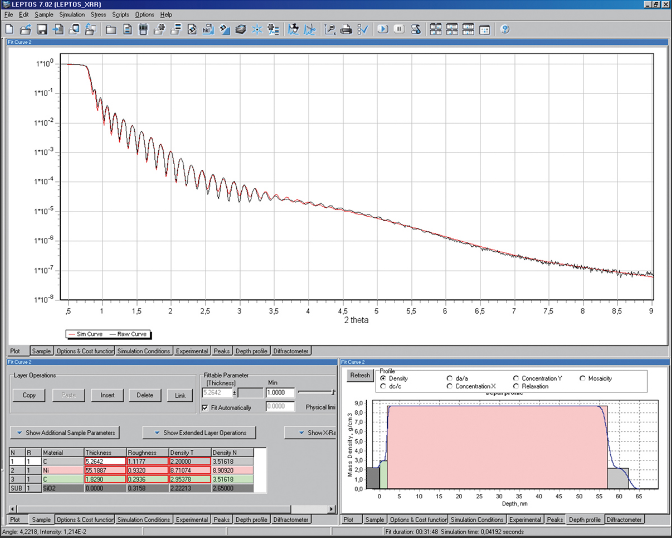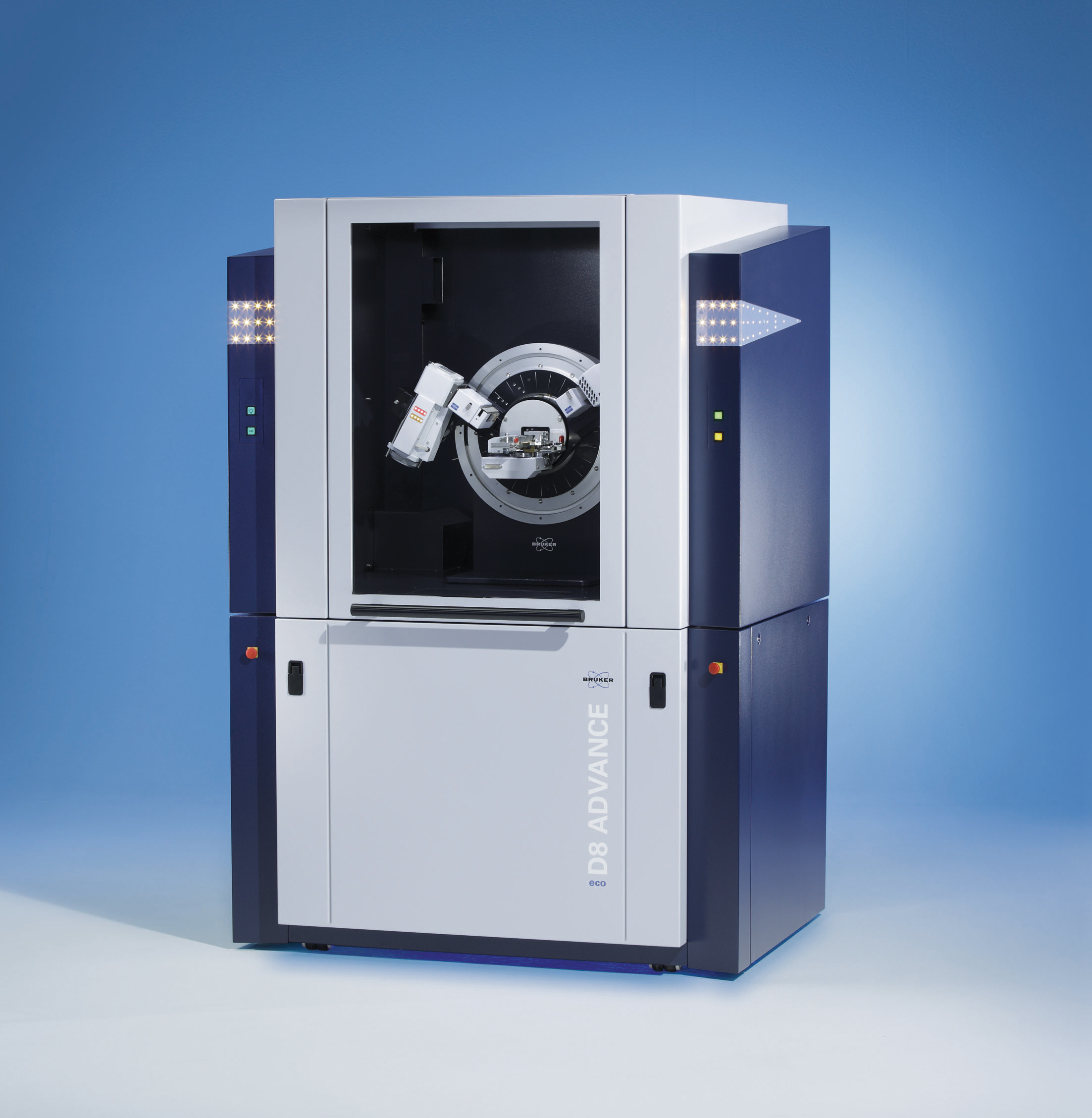TWIN/TWIN optical path
Brooke's exclusive invention of TWIN-TWIN optical path design greatly simplifies the operation of D8 ADVANCE, making it suitable for various applications and sample types. For user convenience, the system can automatically switch between four different beam geometries. This system can switch between Bragg Brentano powder diffraction geometry and parallel beam geometry of poorly shaped samples, coatings, and films without the need for manual intervention. It is an ideal choice for analyzing all types of samples, including powders, bulk objects, fibers, sheets, and films (amorphous, polycrystalline, and epitaxial), in both environmental and non environmental conditions. X-ray diffractometer

Dynamic Beam Optimization (DBO)
Brooke's unique DBO function sets a new and important benchmark for the quality of X-ray diffraction data. The automatic synchronization function of motor driven divergent slits, anti scattering screens, and variable detector windows can provide you with irreplaceable data quality, especially in low 2 Ɵ At an angle. In addition, all LYNXEYE detectors support DBO: SSD160-2, LYNXEYE-2, and LYNXEYE XE-T.

LYNXEYE XE-T
LYNXEYE XE-T is the flagship product of the LYNXEYE series detectors. It is currently the only energy dispersion detector on the market that can collect 0D, 1D, and 2D data, suitable for all wavelengths (from Cr to Ag), with vertex counting rate and better angular resolution, making it an ideal choice for all X-ray diffraction and scattering applications.
LYNXEYE XE-T has an energy resolution better than 380 eV, which is truly outstanding, making it a better performing fluorescent filter detector system on the market. With it, you can filter 100% of the excited iron fluorescence with zero intensity loss, without the need for metal filters, so there are no artifacts in the data, such as residual K ß and absorption edges. Similarly, there is no need for a secondary monochromator that will remove intensity.
Brooke provides a unique LYNXEYE XE-T detector guarantee: no defects are guaranteed upon delivery!

powder diffraction
X-ray powder diffraction (XRPD) technology is one of the important material characterization tools. Many information in the powder diffraction pattern is directly derived from the atomic arrangement of the phase. In D8 ADVANCE and DIFFRAC With the support of SUITE software, you will be able to easily implement common XRPD methods:
· Identify crystalline and amorphous phases and determine sample purity
· Quantitative analysis of crystalline and amorphous phases in multiphase mixtures
· Microstructure analysis (microcrystalline size, microstrain, disorder...)
· A large amount of residual stress generated by heat treatment or manufacturing of components
· Texture (preferred orientation) analysis
· Indexing, de novo crystal structure determination, and crystal structure refinement

Analysis of distribution functions
Distribution function (PDF) analysis is an analytical technique that provides structural information of disordered materials based on Bragg and diffuse scattering ("total scattering"). Among them, you can obtain information about the average crystal structure of the material (i.e. long-range ordering) through Bragg diffraction peaks, and characterize its local structure (i.e. short-range ordering) through diffuse scattering.
In terms of analysis speed, data quality, and analysis results for amorphous, weakly crystalline, nanocrystalline, or nanostructured materials, D8 ADVANCE and TOPAS software have replaced better performing PDF analysis solutions on the market:
· Phase identification
· Structural measurement and refinement
· Nanoparticle size and shape

Thin films and coatings
The principle used for thin film and coating analysis is the same as XRPD, but further provides beam adjustment and angle control functions. Typical examples include but are not limited to phase identification, crystal quality, residual stress, texture analysis, thickness determination, and composition and strain analysis. When analyzing thin films and coatings, emphasis is placed on analyzing the characteristics of layered materials with thicknesses between nm and µ m (from amorphous and polycrystalline coatings to epitaxial growth thin films). D8 ADVANCE and DIFFRAC SUITE software can perform high-quality thin film analysis as follows:
·Grazing incidence diffraction
· X-ray reflection method
· High resolution X-ray diffraction
· Reciprocal spatial scanning









